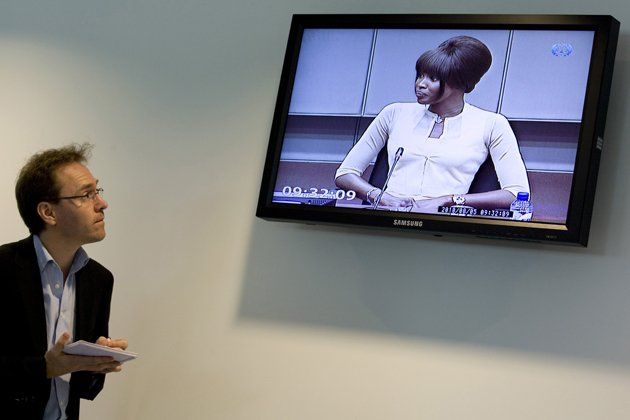
Naomi Campbell's PR agency has outlined its methods for getting the supermodel through allegations, in court, that she'd accepted blood diamonds from a dictator. Here, based on the advice, is our handy guide for any supermodels called to appear before war crimes tribunals.
Neil Wallis, a senior consultant for PR agency The Outside Organisation, wrote his account of steering Campbell through the trial of former Liberian president Charles Taylor in industry magazine PR Week. Taylor is accused of training brutal rebels in Sierra Leone, fuelling that country's civil war, in exchange for diamonds. He denies ever handling gemstones -- a claim that might be disproven if it is established that he gave Campbell, as is alleged, a pouch of stones at a celebrity-filled dinner party in South Africa in 1997. Wallis says that he, with Alan Edwards, the CEO of Outside, and Campbell's solicitor followed this plan:
-Keep it "lowkey, respectful, and unfussy": This was apparently the aim behind banning cameramen from the court, despite the fact that proceedings were broadcast on the Internet. The move, said Wallis, was "to try to protect a solemn venue like the War Crimes Tribunal from suffering the kind of outrageous paparazzi madness that can unfortunately hound any public appearance by Naomi Campbell." It may also have had the coincidental effect, we notice, of keeping pictures of Campbell entering the court to a minimum. But we are sure that was a mere afterthought.
-Get a tour: Campbell's team was, apparently, given the lay of the land the night before the appearance. That might have helped sneak Campbell into the court "virtually unnoticed by the packs of press she was driven past."
-Dress "soberly, demurely, and appropriately for the occasion."
-Answer questions "honestly and clearly": this seems to be a matter of perspective. Campbell's former agent, and the actress Mia Farrow, who were both also at the party, disputed Campell's claims that she was not sure that the diamonds she received were from Taylor. And much of her testimony was vague. And Campbell said that her forced appearance at the trail was "an inconvenience," which didn't quite send the right message.
-Claim a victory for justice itself: The media coverage, said Wallis, "was dominated by broadly neutral court reporting, which to the PR is a positive." And the real winner, according to Wallis, was the court. "As one of the UN staff told us [very eloquently and in a handy soundbite, apparently] "90 minutes on the witness stand by Naomi Campbell has given the issue of blood diamonds and the war crimes alleged against Charles Taylor more coverage worldwide than its [sic] had combined in the three years the trial has been underway."
We are not so sure about the impact of celebrities on serious issues. But we do have a tip of our own for Wallis. He described the court before Campbell arrived as "literally, the calm before the storm." We think he must have meant 'metaphorically', unless there was an actual storm that struck the courthouse, but left unreported thanks to a deft PR strategy. Our consulting bill is in the mail.
Uncommon Knowledge
Newsweek is committed to challenging conventional wisdom and finding connections in the search for common ground.
Newsweek is committed to challenging conventional wisdom and finding connections in the search for common ground.





